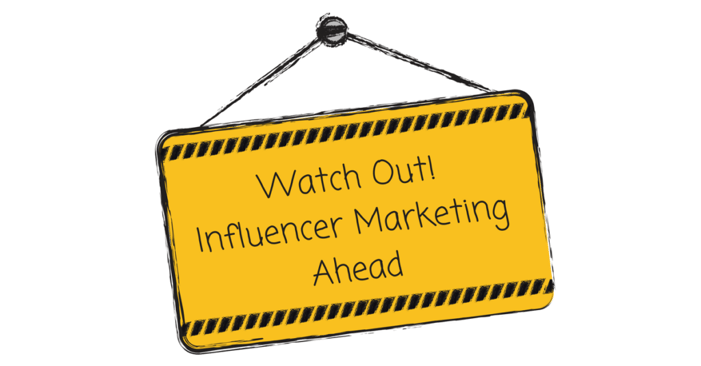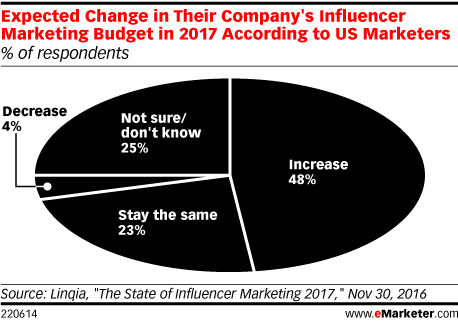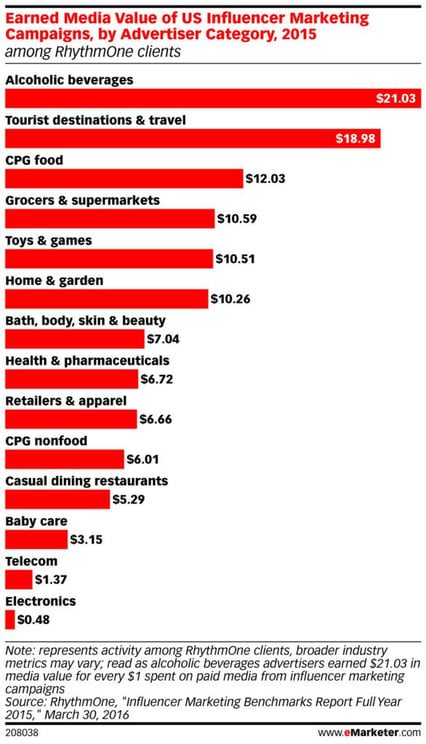These influencer marketing watch outs are crucial to a successful campaign.
As influencer marketing becomes a more common practice, it's more important than ever for marketers to keep up to date with the latest tactics and trends in their respective industry. What’s equally important, is understanding those tactics that brands should also avoid to prevent ending up on the consumer's bad side, or worse, the influencers. With that, we’ve compiled three major influencer marketing watch outs to consider when developing your next influencer marketing campaign.
1. FTC Compliance
The FTC recently sent letters to more than 90 influencers and the brands they were representing reminding them that sponsored posts should be “clearly and conspicuously” disclosed. In this update, they have clarified what language is unacceptable. If you’re using #sp, #spon or #partner, you’ll need to change these to the more acceptable #ad, #paid or #sponsored.
“To make a disclosure “clear and conspicuous,” advertisers should use clear and unambiguous language and make the disclosure stand out. Consumers should be able to notice the disclosure easily. They should not have to look for it.”
The point here is that a brand’s influencer marketing efforts should be transparent to consumers, and sponsored content must be clearly called out as such. This can be done by including an introductory sentence within a blog post like:
“I was asked to participate in the [name] campaign sponsored by [brand]. Although I have been compensated, all opinions are my own.”
Or by ensuring that social posts include an appropriate hashtag at the top of the post i.e. not buried in a sea of hashtags beyond the “see more” button.
The FTC has even gone so far as to publish a blog post on the topic. In it, they call out three compliance watch-outs:
- Keep disclosures unambiguous
- Make disclosures hard to miss
- Avoid hard to read, buried hashtags that are likely to be skipped by readers
The bottom line? Now, more than ever, compliance is extremely important. We provide our influencers with clear language to use to ensure they are meeting the FTC’s guidelines for each and every campaign that we manage. Additionally, we believe that it won’t be long before the FTC chooses to make an example of a brand that has been breaching compliance guidelines – and we’re making sure it won’t be one of our clients.
2. Budgets Are On the Rise
48 percent of brands stated in a recent poll that they would increase their influencer budgets in 2017. You might be asking why this is something to look out for. We’ve included it here because the recent increase in demand for authentic, original influencer content has led to an increase in cost.
Brands should allocate adequate budget to their influencer campaigns in their annual budgeting rather than struggling to pull from other resources down the road. The bigger the campaign you plan to undertake, the more reach and engagement you are seeking for your branded content, the larger the investment needed.
Why are budgets rising so quickly? The short answer is because influencer campaigns have proven again and again that they achieve meaningful results and, thus, influencers have vastly increased their fees. The chart below on earned media value shows just how valuable influencer marketing is by vertical market.
If your brand is struggling to negotiate with influencers over budget and campaign objectives, agencies like Carusele work with influencers every day. We know how to work with everyone to get the best results – on budget and with specific deliverables achieved. We also know how to talk to influencers and get them interested in a brand.
3. Different Than Buying Ad Space
Conducting an influencer marketing campaign is different from just buying ad space… but you knew this already, right? Ad blocking is at an all-time high with up to 40 percent of ads being blocked, making influencer marketing a great alternative to traditional digital advertising.
The most important point here is that brands should try not to be too prescriptive with their instructions. The campaign content must be authentic to get the results you’re looking for – and you’re working with influencers because of their ability to offer a unique perspective. Too many rules and regulations will stifle this perspective and instead of authentic third-party content, your message will be dismissed as advertising.
Brands need to provide influencers with enough information about campaign deliverables to ensure that they’re meeting your brand guidelines, but you can’t expect to edit and change their content once it has been produced. The delicate balance here is in understanding how to work with influencers to give them the freedom they want but also ensure your brand is represented the way you expect.
Interested in learning more about influencer marketing for particular vertical markets? We recently conducted a series of webinars for food, beverage and alcohol brands.
-1.png?width=504&height=360&name=Carusele%20logo%20%C2%AE%20logo%20Color%20(2)-1.png)


